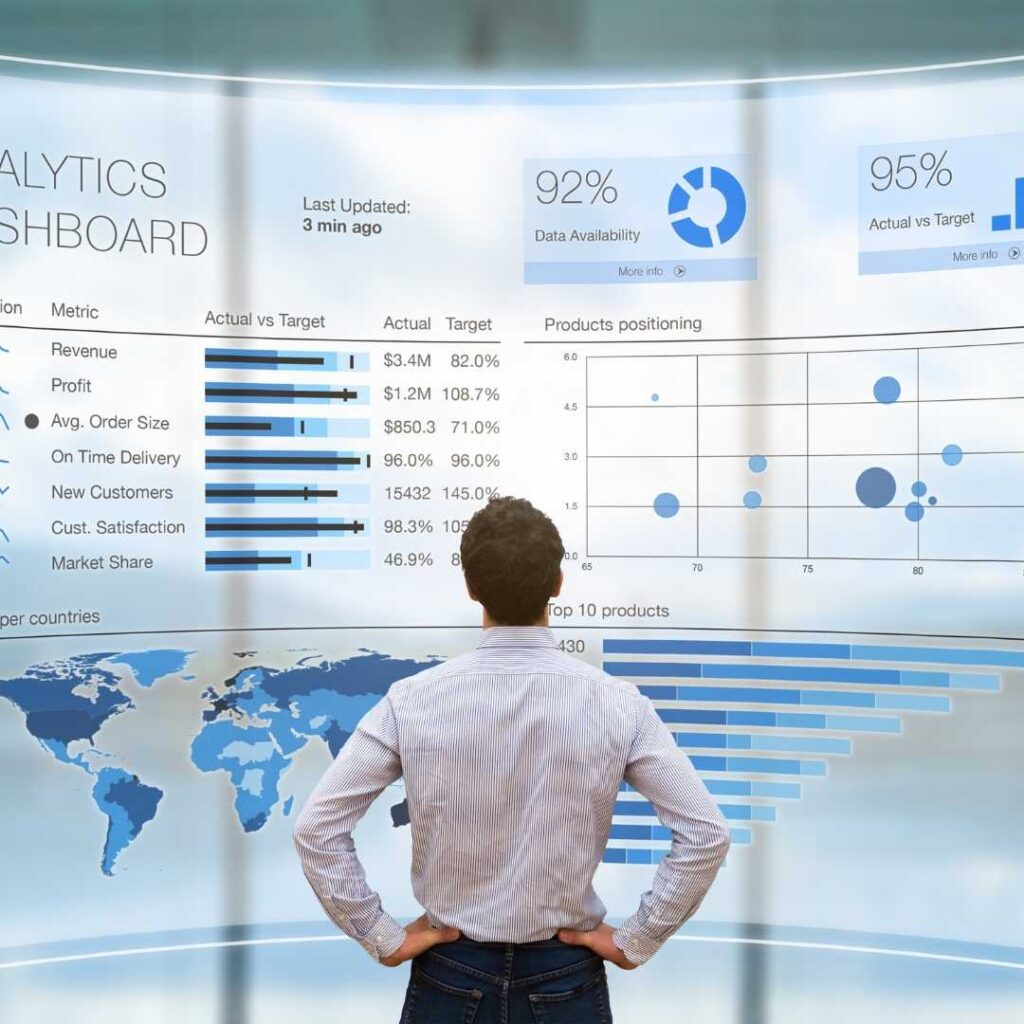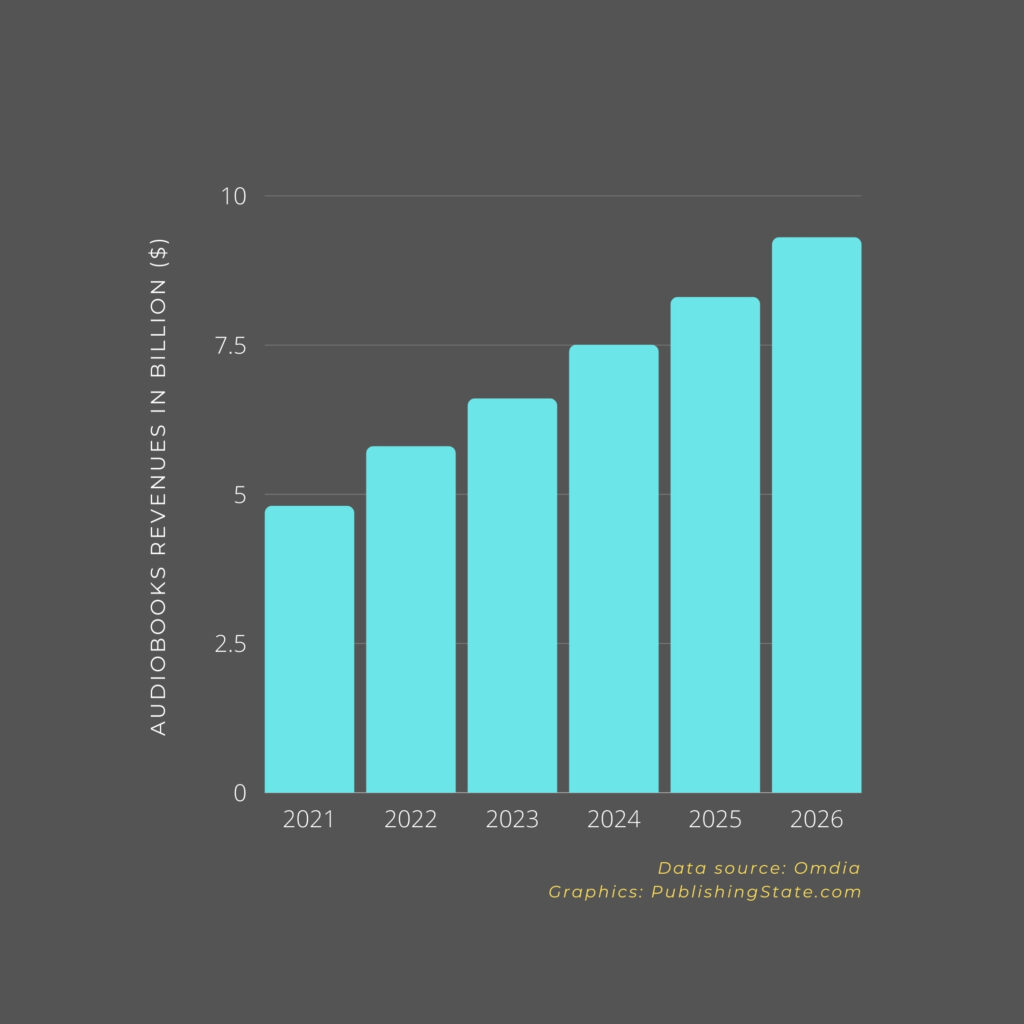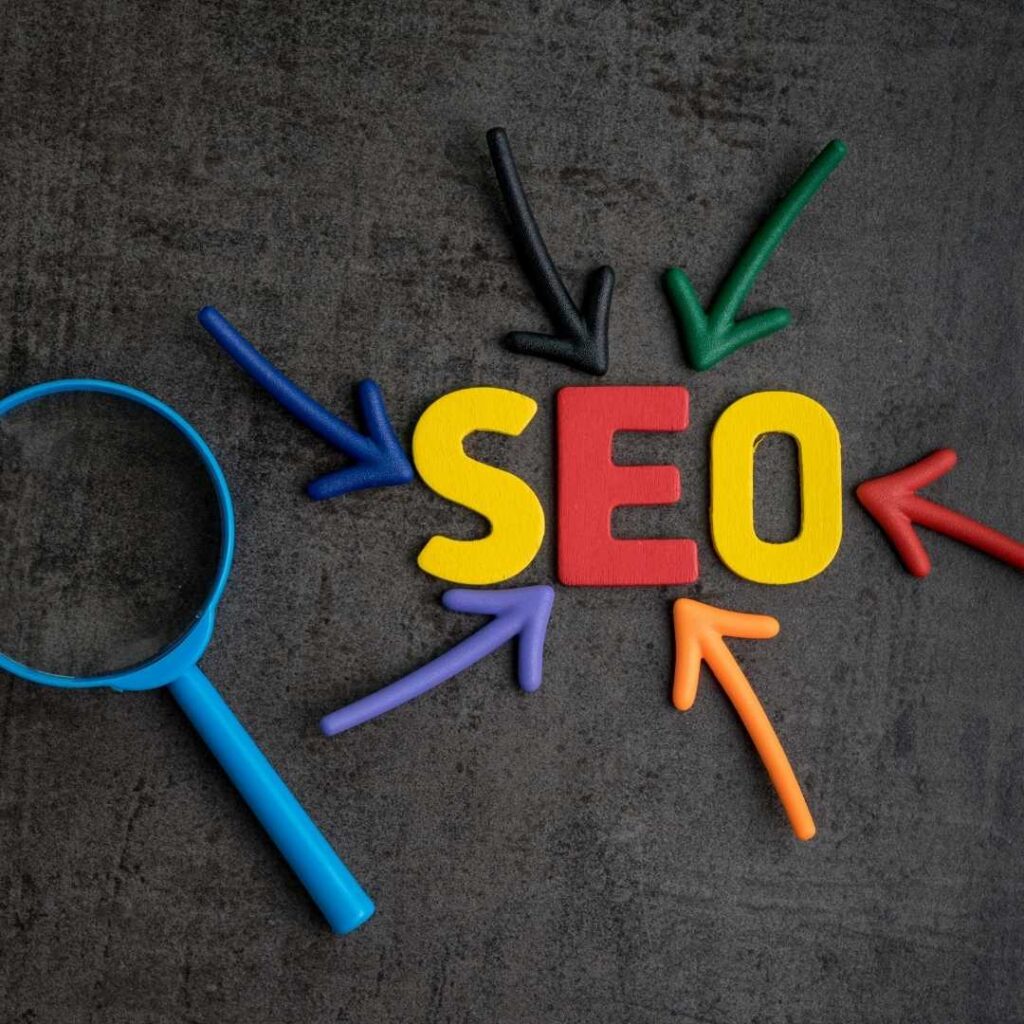Table of Contents
- How Do Publishers Use AI?
- 1. New Title Acquisition and Content Curation
- 2. Identify Trends in Book Sales and Predict Popular Books
- 3. Analyze Book Content and Generate Social Media Marketing Posts
- 4. Predictive Analytics to Forecast How Well a New Book Will Sell
- 5. Automate the Conversion Process from Printed Books to E-book Formats
- 6. Convert Books to Audiobooks
- 7. Track Fast-selling Book Titles and Alert Inventory System
- 8. Design Book Covers
- 9. Scan Academic Papers and Rank Them Based on Citations
- 10. Improve Existing Content
- 11. Rewrite an Entire Academic Book for the General/Popular Market
- 12. Personalized Advertising
- 13. Video Marketing
- 14. AI Chatbots for Customer Service
- 15. VR and AR for an Immersive Experience
- 16. Copyright Protection
- 17. Track Reading Behavior
- 18. Improve Author Productivity
- 19. Improve the Publishing Workflow
- 20. Improve the Author-editor Relationship
- 21. Streamline Effective Marketing Budget
- 22. Help with SEO and Keywords
- 23. Editing and Copyediting
- 24. Text-based Image Generation
- 25. Automated Email Marketing Campaigns
- 26. Reduce the Publishing Team Size
- 27. Reduce Cost
- Concluding Remark
Artificial intelligence (AI) is machine-based intelligence.
AI is a technology developed to replicate human intelligence and with the ability to keep improving based on the input given. In other words, AI learns and gets better with time.
AI can not only think, but they can also take action.
John McCarty, a Stanford University computer scientist, first coined the term “artificial intelligence” way back in 1956.
How Do Publishers Use AI?

According to a study published by McKinsey in 2017, AI will boost growth and transform the way businesses are done.
Frontier Economics also reports that AI amplifies content discoverability, safeguards intellectual properties, and helps in market predictions.
AI has been developing at a remarkable speed in recent years, affecting various industries. The publishing industry is no exception.
With the advent of AI technologies, major publishers have incorporated AI into various publishing aspects. AI integration has improved their workflows, facilitated content curation, analyzed market data, streamlined promotion efforts, and optimized costs.
In this article, I will discuss 27 fascinating ways AI is being used in the publishing industry.
Several ways have been quite mainstream in some of the largest publishers in the world due to their financial muscle.
However, as more and more AI technology players emerge, the cost of implementing AI has been reduced. As a result, for small publishers and self-published authors, AI techs have become more affordable and are within reach.
1. New Title Acquisition and Content Curation
With AI data, publishers can now ride the trend and identify the emerging issues and hot topics in demand for publication (such as news or books).
The data will help publishers determine which goes into a priority in their title-building list.
Book titles play a critical role in gaining market acceptance by readers. And understanding what the market needs is crucial in publishing books or content that will resonate among the readers.
Using AI will help publishers produce relevant content, plan positive growth trajectories, and increase revenues.
AI can help a publisher understand which titles might be a good fit for a specific target market. One of the earliest adopters of AI, Amazon has been using an AI-based recommendation engine to match titles with users for many years.
2. Identify Trends in Book Sales and Predict Popular Books
AI can help a publisher identify trends in book sales and even predict which books will be a hit. Publishers can use or create an AI-based book discovery engine to identify books in demand and become a bestseller.
Using AI, a publisher can emulate a customer’s thought process when reading a specific book from the data collected through machine learning algorithms. This helps publishers know how readers respond to an author’s writing style, a book topic, a title, or a subtitle.
With AI data, publishers can analyze consumer behavior patterns and preferences about a specific book. Additionally, they can shorten their time between acquiring a new manuscript and publishing it in the market.
Applying all these principles helps a publisher, big or small, make a better decision about promoting a certain title or investing more money into a project.
3. Analyze Book Content and Generate Social Media Marketing Posts
Publishers can analyze a book’s content and generate social media marketing posts with the help of AI. A book’s content can be large. Some go as many as 100,000 words or over 600 pages.
Identifying the gist and the hooks of the entire publication will help publishers create better marketing teasers. These teasers can be in the form of short-burst social media posts to promote and market their publication.
Sometimes, a reader makes a book purchase by reading a one-page summary or marketing excerpt from the book.
If a human can do this job in two days (as they need to read the entire book), an AI system can do it within minutes. Not only that, if you are not satisfied with the results, the process can be repeated over and over!
AI can find connections between words in any language with incredible accuracy and speed using deep learning principles. Also, I wrote earlier that the AI system will evolve to get better as they learn more things.
This is a great strategy because it helps publishers create relevant, informative, persuasive, or entertaining promotional messages at scale for their target audience to increase customer engagement.
A machine learning algorithm will understand a book’s content and automatically create a social media post using relevant hashtags, keywords, or phrases to improve engagement chances.
4. Predictive Analytics to Forecast How Well a New Book Will Sell

Predictive analytics is a great way for publishers to forecast how well a new book will sell and determine whether it is worth investing in a project.
The accurate prediction helps publishers to increase revenue potential and plan highly targeted campaigns.
Suppose a publisher is looking to invest in a new author. Because of the uncertainty in the publishing market, some publishers (even the big ones) hesitate to pour their investment into new authors.
However, AI can reliably predict sales performance and help publishers determine if the publisher should invest in the project.
Hence, AI data helps decision-making since the data output can predict if the book will go a long way and that investing in that new author will be worthwhile.
Another useful note is that publishers can also use a predictive analytics tool to determine the lifespan of a book. This way, popular titles can have sequels like the famous Harry Potter series.
Social media data allow publishers to predict if a title will attract the audience’s attention for more than one publication season or fizzle away.
This strategy allows the publishers to determine the right time to pull the plug of the current project to focus on others. Yes, this may sound mean, but business needs to go on.
5. Automate the Conversion Process from Printed Books to E-book Formats
Having been involved in a major e-book publishing project, I can tell that automating conversion from printed books to e-books is not easy. And this is why we still have people working on the production and the quality control.
The reason is that some of the elements in printed books need to be rendered differently in e-book format, and we need to have human editors looking into it.
But AI today can automate a publisher’s conversion process from printed books to e-book formats and take over the human editor’s role (yes, I know, sad).
The biggest benefit is that it helps publishers save time because they don’t have to hire a team just for formatting and uploading a file before publishing a book online.
Publishers use AI automation technology today by applying the necessary changes automatically to a book’s content, design, and layout before publishing it online.
6. Convert Books to Audiobooks
With the assistance of AI, publishers can now convert a book to an audiobook format with the help of AI.
The audiobook market is not something to be dismissed. It is estimated that the global audiobook market will grow to over USD9 billion in 2026, compared to over USD4.8 billion in 2021.

AI-based text-to-speech conversion technology now has gone a long way, producing great AI narrators with great quality and flair. They can also do accents and slang. In fact, some of the AI voices I have observed in recent times can’t be distinguished from actual human voices!
But audiobook production with AI does not only involve the voice. We’ll have to consider the narrative style and tones, the production quality, and the music background (soundtrack).
The biggest benefit publishers get by using AI for automated conversion processes is a faster turnaround time.
This subsequently helps publishers to diversify their content and reach new market segments. Some content consumers prefer listening to audiobooks rather than reading text. Hence, this is a smart strategy for engaging with a new audience.
7. Track Fast-selling Book Titles and Alert Inventory System
AI can systematically help publishers track which books are selling fast and alert their inventory system so they can restock a title before it runs out.
This is highly practical, especially for seasonal (e.g., textbooks, where demand will spike every new semester) or topical titles (e.g., the general elections).
Being a publisher, our organization sometimes gives erratic output due to errors in human handling.
As a result, some of our books ordered online could not be delivered on time due to discrepancies between retail stock and actual inventory.
Using AI is great as it can smartly detect shortages or even anomalies. When a shortage occurs, publishers will be notified to take necessary actions.
Suppose a customer wants the latest copy of a book. In that case, a publisher’s inventory system needs to be in the loop to check stock levels and determine whether a title is still available for purchase before informing a customer.
The workflow helps publishers save time because automated systems work faster than human beings. Publishers can also give better service because they can always fulfill their promises rather than dealing with backorders and customers’ complaints.
8. Design Book Covers

Publishers can design book covers based on a specific target market’s preferences and tastes with AI.
Yes, that’s right, folks. AI designing book covers. It’s real!
With AI, publishers don’t have to hire graphic designers or learn Photoshop and other design tools.
Publishers can use AI to conceptualize book cover designs by providing a dataset of different covers. This will work well since AI is about processing a large amount of data and learning and improving over time.
Then, the AI can create the design based on the data. It will repeat the process until the publisher identifies the right design.
That does not mean publishers cannot have a say or be involved in the workflow since the cover design is a creative process and design beauty is subjective.
Because AI-based design is a repeat-and-rinse process, publishers will find it an appealing factor. You get AI to create designs over and over until you are satisfied with the final outcome.
And unlike humans, AI won’t rest until you are happy with the results.
9. Scan Academic Papers and Rank Them Based on Citations
Some publishers and analytics companies have begun analyzing academic papers to publish the metrics and rank the papers in databases.
The ranking or classification of research paper impact is not entirely new. It’s been done for decades. But the process has not been entirely accurate.
For example, the task of identifying and connecting papers with the correct authors is cumbersome. Not to mention finding accumulated citations. I have been in this situation numerous times in the past ten years.
But AI will change all that.
With AI, dissecting the metrics of academic papers that include the content and author’s information will be easy and fast. It is also much more accurate.
AI can help with sizing up research significance, but it can also determine the value of a certain scholarly journal for academia.
Big academic publishers such as Elsevier and Pearson will have a field day with AI measuring the impact of research, academic papers, and journals.
The AI metrics can recognize specific scholarly titles and can be useful to zoom into and identify suitable authors for content acquisition.
10. Improve Existing Content
Publishers can improve content readability, topic flow, or structure with AI.
In fact, many AI tools are available for free to check basic English and language issues, such as Grammarly and Ginger Software, whereas the premium or pro versions offer a lot more features.
Other than language, today’s AI can expand texts, rewrite sentences, or convert complex paragraphs into shorter, easily understood phrases. Jarvis AI writing tool, for instance, can rewrite a complex sentence for a 5-year-old kid.
This method will help the publishers increase the content appeal to their target audience without having a writer or editor rewrite everything.
Publishers can use AI to scan a publication’s content, analyze its readability level based on specific criteria in mind, and identify key points throughout a chapter.
11. Rewrite an Entire Academic Book for the General/Popular Market
You have seen the above, where AI can rewrite sentences.
Well, why stop at sentences? Why not go all the way for the entire 500+ book pages?
Sure!
Publishers can rewrite a whole manuscript to target a more general audience than the academic one originally intended.
Let’s illustrate with a simple example.
Suppose an academic publisher plans to publish a book on managerial accounting for accounting professionals and academics.
With AI, the publisher can now produce another version of the book that will cater to a wider general audience: high-school students, clerks, and general administrators.
Of course, to maintain quality, a human touch is still needed to check everything at the quality control phase.
Certainly, this can be a two-pronged strategy that can help publishers reach two sets of readership markets from a single, original work.
12. Personalized Advertising
Publishers can use AI to scan a book’s content and analyze the text to identify specific keywords related to a topic or a product advertisers want their ads associated with.
AI can churn out highly targeted headlines, book descriptions, and calls to action for different platforms such as mainstream news media, emails, social media, etc.
Additionally, AI can help publishers split test (or A/B testing) their campaigns, analyze performance data, and identify the best campaign that will work in their favor.
13. Video Marketing
AI can generate a video ad targeting a particular audience.
The AI algorithm analyzes a book’s content, scans the text for specific keywords related to a topic, and creates videos that target the identified market audience.
Because of their engaging nature, videos continue to gain traction. More than 30,000 hours of videos are uploaded every single hour on YouTube. This is a massive number that will only continue to grow.
Compared to other AI aspects, AI video marketing is still developing and is yet to achieve maturity. It may seem a bit uncertain where things are heading.
Why?
Videos are not only about content; they are also about stories and how the stories are told. There is a lot of creativity involved in producing engaging videos. I have seen several text-to-video applications at work, and I think the best is yet to come.
But rewards await the early adopters. Since video marketing is already accelerating at a blazing speed, it is only natural for AI to make it big in this promising marketing segment.
14. AI Chatbots for Customer Service
Many companies in the publishing industry have begun incorporating AI chatbots to improve their customer service experience.
Chatting with a real human has limitations. Sometimes, you have to wait in a long queue before being attended. At times, nobody even replies to your chat. Sounds familiar?
What is important to customers is that they want to feel they are cared for and listened to. Not every customer expects all their wish to be fulfilled.
AI chatbots can address regular issues, and when necessary escalation is needed, they will connect with a human provider. What is important for publishers is to create a convenient and comfortable experience by providing answers timely and accurately.
With a better customer service experience, publishers will enjoy a better reputation and retention rates. All queries and complaints can be attended to all day long and all year round.
With AI chatbots, potential losses can be turned into lifetime customers. This is achieved without requiring a human to be on duty 24 hours a day.
15. VR and AR for an Immersive Experience
Publishers can use AI to create a virtual reality (VR) or augmented reality (AR) experience that adds value to their publication.
With this latest tech offering, publishers can entice more readers to make a purchase.
Reports have indicated that sales of books, e.g., children and educational books, multiply with added VR and AR elements in the publication. This is a natural progression for publishers to explore.
With publishing, the art of storytelling has always been a significant part of it. VR and AR will certainly enhance this experience in ways never imagined before.
Publishers can use AI to create VR or AR elements that enable readers to see the hidden world around them.
16. Copyright Protection
Copyright is an extremely valuable asset for a publisher. Content published and marketed by publishers is the intellectual property of the publishers.
Copyright infringement, such as unauthorized copying, translation, alteration, or distribution, will incur any publisher’s wrath. Authors will be displeased, too, knowing that their content has been the subject of unwanted activities.
After all, both publishers and authors have worked hard to produce appealing books for the market. Haven’t they?
There are plenty of AI plagiarism tools now that can detect duplicated contents and alert copyright infringement. But AI can play a much bigger role than that for publishers.
AI can help publishers with copyright protection by automatically scanning their content and identifying it if stolen directly from publishing sites or social media accounts, where authors often share their works to promote them.
With AI, publishers can also create the essential encryption mechanism that safeguards their content.
17. Track Reading Behavior
AI helps publishers track readers’ behavior. It can analyze the pages they have visited, how long they stayed on a certain page, and how they interact with the content.
For years, news publishers have analyzed and identified the “sweet spots,” i.e., areas or content that resonate with the readers the most. Google Analytics is one of the many AI-powered analytics platforms that help publishers interpret granular data.
18. Improve Author Productivity
In publishing, AI can analyze an author’s writing style, measure output productivity, and provide real-time feedback for improvement.
Big publishers and media giants like Reuters, New York Times, and Pearson have invested big in AI writing and productivity tools.
That way, they can get their authors onboard on the AI system that helps them with writer’s block and work more efficiently. Publishers can provide a more personalized experience for their writers so that they can produce better works.
19. Improve the Publishing Workflow
Publishers have also been adopting AI into their processes to make their publishing workflow more efficient. Maybe not entirely run by AI, but giving AI a vital role will influence the final outcome.
In book production, the publishing workflow consists of editing (language check and cleanup), copyediting (consistency and style of publication), typesetting (layout and formatting), and proofreading.
AI can help in many aspects of the workflow, such as editing, copyediting, and proofreading, accelerating the publishing workflow.
Because of the automated process, publications can be done with greater speed and accuracy.
20. Improve the Author-editor Relationship
In publications, a good and productive relationship between the author and editor is crucial. Even a self-published author should work with a competent editor. Publishing is teamwork.
AI can help with this relationship by analyzing a writer’s work and providing real-time feedback to the editor.
This helps the publisher publish a book or article and write a piece published in a reputable publisher.
With AI helping with editing articles, editors get more time to focus on a book or a manuscript preparation. Understanding a writer’s writing style and providing a personalized experience for both parties can benefit the publishing industry.
21. Streamline Effective Marketing Budget
With AI’s capability to analyze advertising and promotion engagement, publishers can quickly point out the most effective marketing strategy that works.
Focus is the key.
This method is much more efficient than putting the money in all available marketing channels only to see most of it go down the drain.
In the past, some publishers spent millions on TV and radio advertising without having reliable data for feedback.
It is also easier to convince the management to make a marketing investment when you have all the necessary data showing where things will work and go wrong.
Streamlining an effective marketing budget is essential. In recent years, the publishing industry has been facing immense challenges, coupled with the Covid-19 pandemic that has brought the world to a standstill.
22. Help with SEO and Keywords

Using the right keywords and competency in search engine optimization (SEO) will push publishers far on the success route.
AI can help a publisher to find the right keywords for their articles and videos. These keywords can be used in search engine marketing, e-commerce platforms, digital marketplaces, and distribution channels.
We are talking about an effective digital marketing strategy.
Effective use of crucial publication metadata such as title, category, keywords, description, and other useful semantic data will increase the likelihood of a book or publication being discovered on the vast Internet.
23. Editing and Copyediting
The publishing process in a traditional setting is long and tedious work.
To maintain high-quality content, big publishers put big teams to handle the editing and copyediting process. Some other publishers outsource the publishing tasks.
Either way, building in-house teams and paying for outsourcing services require serious monetary investment.
The manuscript needs to be thoroughly edited, copyedited, and proofread before going into print or digital format. This process takes a significant amount of time which slows down the whole workflow.
We have discussed earlier how editing and copyediting can be made more efficient using AI. The role of humans will be reduced to the final quality control and review.
24. Text-based Image Generation
AI can analyze text efficiently and create images, charts, or illustrations based on the text.
Sounds amazing, right?
Publishers can take advantage of this opportunity when it comes to infographics. That way, they will generate a lot more content in a much easier form to understand for the reader.
In academia, publishers of scholarly books and journals will find this feature intriguing since many of their publications contain visuals and charts. AI can generate images; they can produce images of high quality, even better than professional designers.
At this point, AI’s potential is still limited to fact-based graphics and purely abstract concepts, but in the future, they will be able to produce comic-based illustrations and animations.
25. Automated Email Marketing Campaigns
Email marketing is a crucial, integral part of publishing. Publishers need to send a lot of emails daily promoting their books or publications.
With the help of AI-driven email automation, publishers can spend less time sending promotional messages and more time on other important tasks related to improving sales performance.
AI will allow a publisher to send a better-targeted email campaign with higher response and engagement rates.
In fact, for the past few weeks, I have been receiving quite many emails written by AI tools. I am sure there are more to come in the coming weeks.
26. Reduce the Publishing Team Size
With all the benefits, AI will certainly reduce the need for a big publishing team. Some of the weaker links in the chain will, unfortunately, have to go.
This is probably a hard fact to swallow. But facts are facts.
The publishers will have a smaller publishing staff to maintain, leaving a leaner organization. Other functional gaps left by humans will be taken over by AI tech.
This new team will almost certainly be more efficient and more effective than the traditional setup.
27. Reduce Cost
Finally, with the reduction in size, the costs will reduce too. These associated costs include overhead, operational, and marketing expenditures.
Some publishers may wait for a while before making adjustments. But they may risk being chased by the new, smaller publishers who adapt better to changes.
The publishing business is a complex and very competitive industry. But it is not impossible at all for today’s publishing giant to cease existing in 5 years if they are reluctant to make changes.
AI will certainly put the publishers on a more level playing field with their competitors, which can be a great advantage to those who choose not to invest in AI tools.
Concluding Remark
AI has helped publishers streamline a more efficient publishing workflow, increase productivity, help with content curation, optimize cost, and expand growth.
There are just too many benefits to miss if publishers choose to ignore AI and its capabilities.
[I have also written and discussed the question: can AI write academic papers?]
As a publishing industry player myself, I also have to look at ways to incorporate AI into our publishing aspects, many of which are dated. Without realizing AI’s potential, we will be at risk of becoming obsolete.
Whatever you think about AI, it will certainly play a significant role in publishing and improving the industry.
Five years ago, we would probably have not thought that we could identify potential hot topics simply based on the analytics gathered by a machine. How times fly.
What is your opinion? Do you think publishers are doing it right with AI?
Or do you feel that AI is an existential threat to humans and will make many people lose their jobs?
Is the publishing industry accelerating at a similar speed to other growing industries? Or are we behind? What else can publishers do with AI?
These questions remain to be answered.

15 thoughts on “How Do Publishers Use AI? 27 Fascinating Ways”